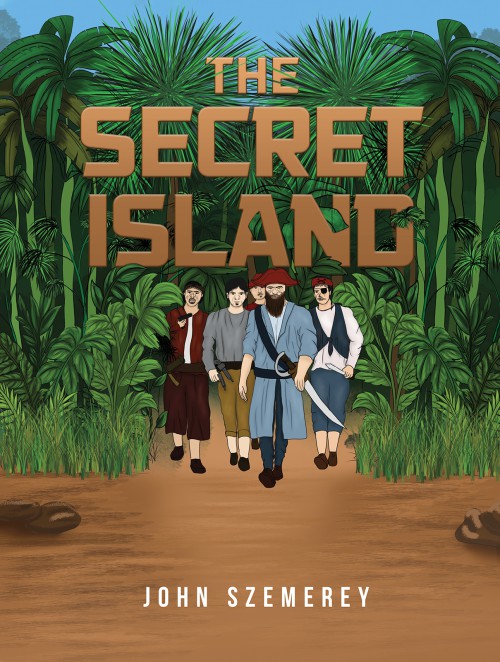
By: John Szemerey
*Available directly from our distributors, click the Available On tab below

John Szemerey is a journalist. He is a general and political features writer, and was one of the first British officials of the European Commission (1974–2006). He is now retired.
This is an unusual book to review for The Journal of the Chartered Institute of Journalists. It is an adventure novel for children, written by a journalist, longstanding CIoJ member, John Szemerey, for many years a stalwart of the Institute's International Division. But The Secret Island is more than just a children's book. It is pure escapism of the old-fashioned variety; John Szemerey is the twenty-first century Enid Blyton. So, choose The Secret Island as a Christmas present for your children or grandchildren if you want a cracking good yarn that you can read out loud to them as a bedtime story, or they can read to themselves in the back of the car or on a long train journey. It's the sort of story that should fill any youngster with a wanderlust and a burning desire to travel and explore - even if, unlike the children at the heart of this novel, it does not actually lead your children to do battle with modern-day pirates! And if you are planning a family holiday to the Channel Islands - which I heartily recommend - take this book with you! (The secret island of the title is just off Guernsey.)
Új könyve fordulatos, érdekes, ugyanakkor tanít a jóra. Erre ma nagy szükség van! EN translation: The new book is lively, interesting and teaches good. There is a great need for books of this sort!
Morale and self-acceptance has gone down substantially for children since the Sars-2-Covid pandemic began and this new, young people’s book by John Szemerey, a retired journalist and one of the first British officials of the European Commission, brings good medicine. His fast-paced adventure tale shows how healthy, confident children might deal with any potentially dangerous and frightening situation: pirates, in this case! On a forgotten island in the vicinity of Guernsey. The cover for The Secret Island, with its swaggering, dangerous-looking complement of pirates, complete with knives, guns and, potentially, other lethal weapons, sets the tone for a story that will keep readers of all ages on their toes. As they set off on their adventure, this trio of siblings from the Thompson family - Peter, Edward and Jo - must learn how to share such tasks as steering, boat navigation and gauge the likely distance between islands. They must also avoid other craft, keep an eye on their fuel and, crucially, plan their timing in all things. It takes all three Thompsons working together to safely moor the motor boat in unknown waters. Moreover, their presence on the ‘lost’ island might not only endanger their own lives, it could imperil the safety of a young woman held captive there. By this time, they have seen some of the pirates and they need to be careful. Very careful. Pirates aren’t known for compassion towards those they meet unexpectedly. Can the Thompsons work together and respond to danger without panicking or losing their heads? Cunning is needed. The Secret Island is not a moralistic book. Rather it shows - in a natural way - how positive family ties among children can help them to withstand pressure elsewhere. Likewise, when parents encourage children to try out new things, together or separately, it lays the ground for them to cope with varied events in their lives. The book also deals with death. It shows that saving someone might not be enough. What about later? Suffice to say, The Secret Island has a slightly sad but satisfying ending. One note, here, about the Kindle version of The Secret Island. At first glance, the cream print on grey looks promising but, in practice, the small print means it’s not easy to read; at least, not for this grandparent nor, probably, for many younger children. In contrast, the hardback version is a jewel among children’s books and would make an inspiring change from sweets on the Christmas tree. As the youngest child involved in the story is a seven-year-old girl whilst the pirates’ prisoner is 18, the book could have appeal for an unusually wide readership. The hardback version of The Secret Island has strong covers with evocative colours and illustrations to match the action throughout. Early pages bask in summery blues whilst, on the secret island, deep brown pages subtly reinforce darker elements of the story. One’s heart shifts, as the blue pages return again. The last - yet by no means, the least important takeaway from The Secret Island - is the clarity of John Szemerey’s writing. This is ‘not just a holiday adventure’. The Secret Island’s 42 pages encompass a wide range of experiences for those with a yen for adventure. Some readers may find their ability to write clear English is improved and teachers are likely to find it a useful tool in their lessons.
We use cookies on this site to enhance your user experience and for marketing purposes.
By clicking any link on this page you are giving your consent for us to set cookies